THE WADAX ATLANTIS REFERENCE
Kulaklık Modelleri ve fiyatları, en iyi kablosuz kulaklık, en iyi kulaklık
hificinema.co.uk
lotushifi.co.uk
oxfordaudio.co.uk
30/08/2024 03:45
Kulaklık Modelleri ve fiyatları, en iyi kablosuz kulaklık, en iyi kulaklık
RECALIBRATING
As I embark on this most difficult task – attempting to faithfully describe the experience of this one of a kind device – it strikes me that just as profound and instructive my time with the Wadax Reference DAC and Streamer has been, there is an almost equally powerful revelation to hand and that is fundamentally the new found knowledge I now possess of just how much quality is inherent and securely contained within a wav file, a CD disc or indeed a stream of data being delivered into one’s home network.
Yes, the Wadax has first and foremost, abruptly altered my belief system in the nature of digitally stored music, it’s ultimate potential, its final limits and possibilities. We have all seen this before of course; I remember as a young lad in 1998 grabbing a new Linn Ekos tonearm the week they were officially released from UK dealer Unilet in New Malden, and duly replacing my aged Ittok, and then spending the most of the next few weeks open mouthed at how all my favourite records REALLY sounded. But the difference here is that my time with the Wadax has come at the end of 35 years as an enthusiast and 12 years as a high end dealer, well accustomed to some of the very best equipment in the world, so the conclusions are a little more pertinent and far reaching to say the least.
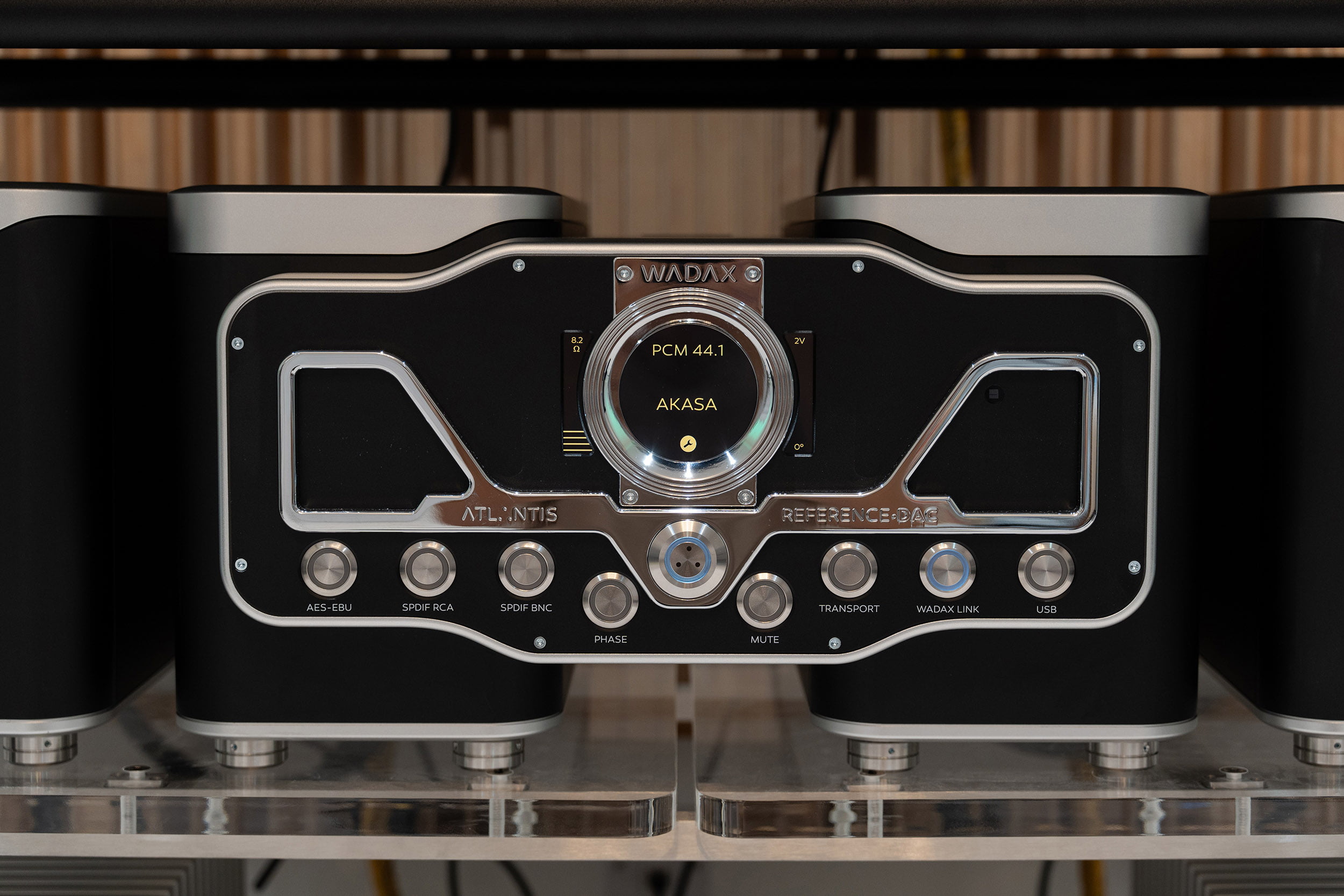
Regular readers will know that our flagship Digital setup sold to customers here usually looks like the Tidal Arkas streamer feeding the Tidal Camira DAC via i2s (or more recently the Tidal Contros or Bugatti MP-1 which combines similar units to those into one box). The invoice here is anything between £56,000 and £88,000; not cheap then but not nearly as expensive as quite a few of the other state of the art digital sources that tend to populate some of the most ambitious systems across the world. I have heard and engaged with most or even all of these, after all it’s my job, and indeed some of my customers own them so I get to fettle and look after them too. And whilst the undeniable truth is that there is a lot of alluring and very high performing product out there in all classes of high end electronics, for me no digital replay device in isolation moves things on, even incrementally, from the current select crop of state of the art olympians.
Flavourings, presentations, fingerprints and intentionally added personalities can change between the world’s ultra DACs which will mean some will dovetail inside some systems better than others, and even final resolution levels can vary subtly too, but there is no Ittok to Ekos moment, no AB where you are stand there utterly assaulted by the knowledge that you are witnessing something much much more advanced and adept than anything else in the way it consumes a piece of digital information and turns it into music.
Unless that is, you properly experience the Wadax Atlantis Reference. For me, that moment as a dealer happened in October to December 2023 when I had no less than 3 months to truly get my head around this remarkable piece of equipment. Something I might add that happened more by accident as my interest was piqued after the UK Hifi show at Ascot racecourse. As all the various in depth reviews over the last few years have pointed out, with Atlantis Reference, Javier Guadalajara and his team in Madrid have dramatically shifted the state of the art, recalibrated the position of the horizon, and increased the ultimate enjoyment potential of digital music if you have the means. They have unlocked so much more from the digital signal, that a pause is required in order to reassemble your beliefs about the medium. Finally we have something which can truly toe to toe with the very best Vinyl setups, especially in terms of out and out dynamics and life.
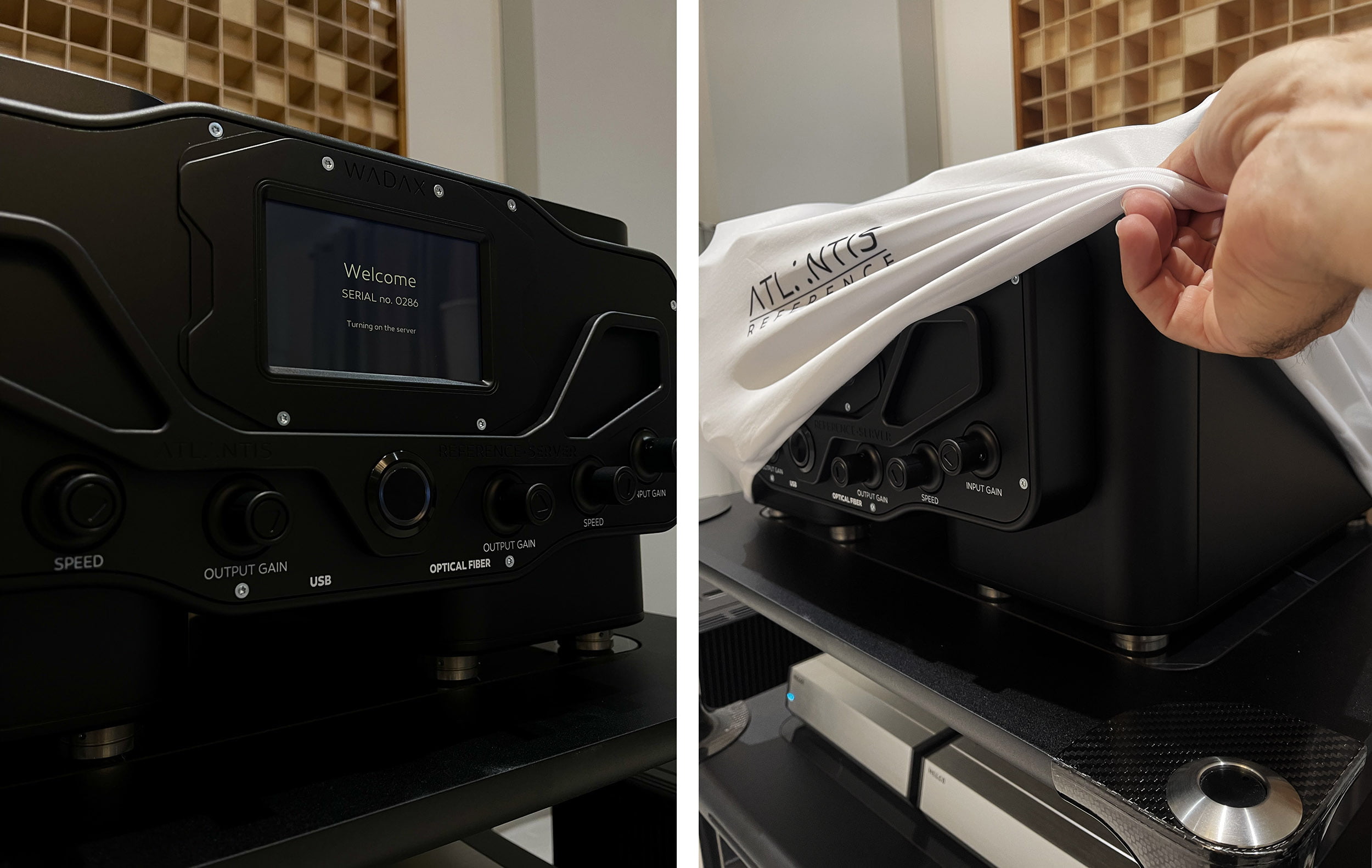
When the Wadax left me last winter, I obviously I missed it and despite the enormous investment, I knew in my heart of hearts that it had to come back and be a permanent fixture of Lotus Hifi. I will let you into a small secret as well; although I am normally very good at separating myself out as a dealer rather than a customer, the truth is that I desperately wanted one of these for myself and my own use. Mixing in personal reasoning is never a good idea when you are running a dealership and the reality is that I would never have allowed those feelings and wants to govern my decisions with the brand over and above all the normal critical business checks and balances. But I will at least admit that the genesis of the Lotus/Wadax association in part started with these selfish yearnings to have one of these incredible beasts for my own pleasure outside of working hours. These feelings though also quickly became a useful barometer in my decision making process. If this equipment had the power to affect me this much and create that much desire for ownership, then it will most certainly do that to other people too.
“the Reference DAC rendered a wholesale improvement that was immediately apparent as a significant step forward in digital-audio reproduction”
HOW DOES IT SOUND
In this report I don’t wish to get too deep into sonics, setup and technical discussion. The superb published reviews by both Roy Gregory and Robert Harley (see links below) are exhaustive and highly informative in nature and there is nothing in any of those writing which I would disagree with. The sonic findings of all units and varying permutations of cables and power supplies I also heartily conur with. Rather, I will instead attempt to give you a more summary statement about the sort of sound you can expect and why it advances the medium forward into new territory so convincingly. Also, I wish to outline two important retail points, firstly the Reference’s various setup combinations and the pricing scalability of the system from level 1 to level 4 and its useful upgrade trajectory. And secondly, the powerful degree by which you can alter the sound; this last point is something that many are not aware of and it further strengthens the Wadax with a flexibility and level of sonic adjustment that renders it even more unique in the marketplace.
Firstly though we should begin with some words about the Wadax sound. For this I am referring specifically to the level 4 setup which constituted most of my early listening. I will stress here though that this is the most expensive setup with the additional server power supply, Reference DC umbilicals and Akasa glass optical digital connectivity, but not the only setup methodology and Atlantis Reference ownership can begin at a much lower price point, equally as credible as an ownership proposition too. I also want to quickly point out that although we are describing what was for me, the optimal setup in my test system, by tweaking the impedance and voltage of the DAC and the 3 intriguing parameters by which the server and dac talk to each other, the Wadax sound can be changed radically in a way that is an industry first. More on both these points later.
If the world’s best DACs were top trumps (Horror trumps, Devil Priest set were my personal favourite !) then the 0-60 times, the Horror Rating or number of Football Caps would all be nail bitingly close. Presentation or house sound varies significantly though and along with your own personal brand identification and possibly unit aesthetics, this will be a very important element to consider, sometimes more for how that presentation dovetails with the various weaknesses and strengths of your own system rather than whether you prefer it in isolation or not.
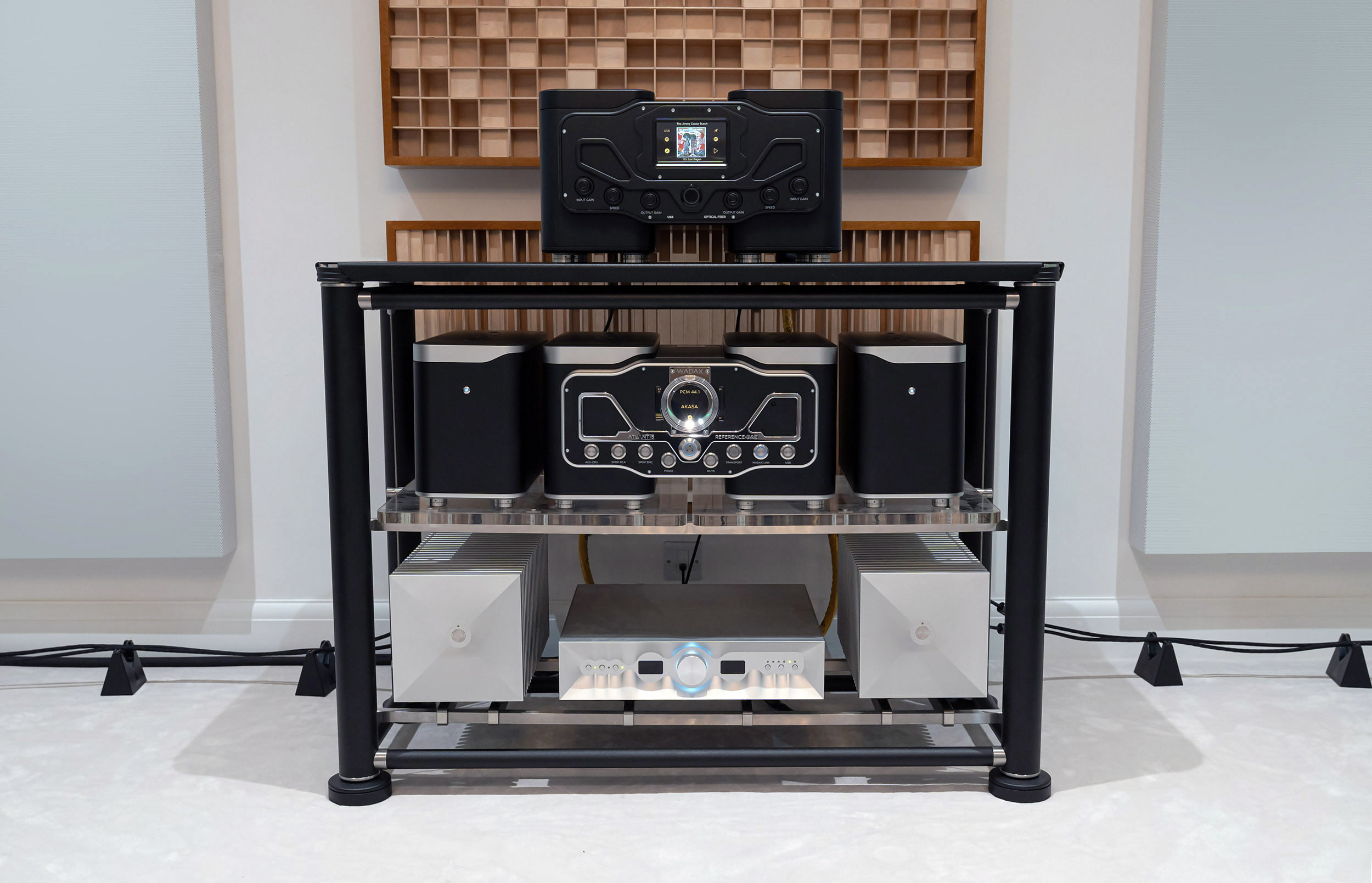
To illustrate this last point we can cite a few examples. A sharper, high resolution sound that is very detail centric (£125,000 MSB Select DAC anyone ?) may favour a system that inherently carries a lot of smoothness, warmth and roundedness elsewhere say in its cabling or loudspeakers. The final result you get is more natural or “right”. Or of course, you may just like a very detailed, razor edged sound and THAT to you is ‘sound quality’. Something like the Lampizator Horizon on the other hand favours liquidity and harmonic saturation more and might be preferred in a system which is already high on bite, precision, or is possibly even tipping into starkness and sterility somewhere or perhaps because one simply prefers that type of presentation per se. These are only examples of course and every single pair of ears, system and music collection is unique but it does give you some idea of how DAC choices and biases are sometimes generated.
What about the typical Lotus sound ? Well regular customers will of course already be aware but naturalness, ease and the notion of “system invisibilty” are uppermost in the way we typically select and build systems. We have found across over 12 years of customer demonstrations that this is nearly always what people want and enjoy the most, and what is ultimately best for the growth and financial success of Lotus. A connection to the music which is as pure and untainted as possible with little to no focus on the actual sonic or hifi attributes of the sound rather than the music.
With that out the way, it is fairly easy to understand why Tidal digital has been our resident flagship for over 8 years now. When we system build we don’t want the DAC to counterbalance flavourings or shortcomings elsewhere in the system. We just want the DAC to be as true and as invisible as possible. If you were lucky enough to hear the Tidal for Bugatti system in Munich these last 2 years or have read all the numerous professional reports on that system, you will appreciate that Tidal digital is a grandmaster of this notion of invisibility. Neither intentionally analogue sounding nor plagued with faint hints of the electronic and digital, it is the music and the artist and nothing else. One of the few systems that genuinely disappears from the room and does not seem to arrive into said room by any sort of process, electronic or otherwise.
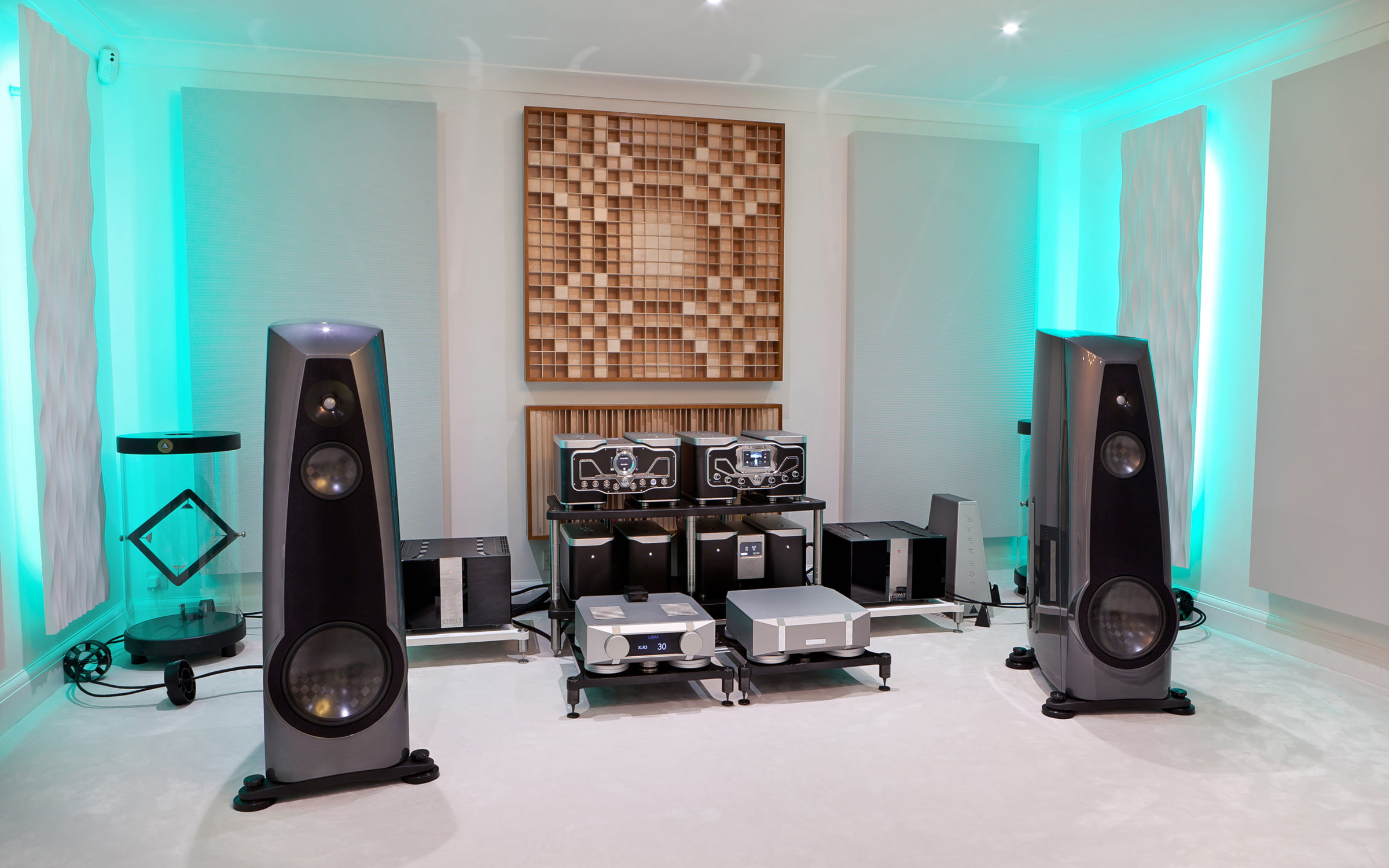
Well when sales director Brandon Lauer brought the Atlantis Reference over to my premises late 2023, I knew in just the first few tracks, that the Wadax sound was something familiar to me. It was without doubt promising entirely new levels of performance from the off, but the actual type of sound was reassuringly familiar and very obviously philosophically aligned with Tidal. That is to say a presentation which has naturalness at its core and does not hide or accentuate any part of the sonic landscape. A sound where the electronic process of reproducing music is completely hidden from the listener rather than making itself felt at the expense of crafting a particular type of presentation or in an attempt to generate interest or impressiveness.
“Through a combination of planning and happenstance, I’ve heard the Wadax Reference Transport and DAC in several locations and multiple systems — and in each and every case, its special quality is immediately apparent. You simply cannot miss how much more natural and credible familiar recordings are when you play them through this front-end — irrespective of the rest of the system.”
LEVELS
Also though, that day the Ittok to Ekos moment immediately slapped me straight in the face but it was huge, so much bigger, like the most profound ever £500 moving magnet to £10,000 moving coil cartridge upgrade. It was instantly obvious that I was listening to a completely new level of insight, a whole new ability in ‘information retrieval’ and not just microdetail per se (what some of us immediately think of when we use that phrase) but information of every kind. Ambience, blackness, harmonic saturation, the size and accuracy of space, the solidity and sheer stability and anchoring of notes, macro dynamic range and slam, the feeling of ripening and note rawness, the prominence and accuracy of faint decaying notes, propulsion and drive, bottom end kinetic power and physicality, top end extension … Basically you name it, it was all there, simply more of all of it, a lot more, as if every other best digital front end before was a delicious glass of blackcurrant Ribena but the Wadax was the same drink but without water diluted into it, just the neat cordial. I like that analogy because it also hints at the intensity, the enrichment, the sheer exquisite indulgence of the Reference. Sixteen courses at Heston’s Fat Duck, a 310 foot ride on the Millenium Force rollercoaster at Cedar Point, a passenger Lap of the Nurburging in a Porsche GT3 with a pro driver, bungee jumping off of the Verzasca dam in Switzerland … the Reference is an instructive ‘once in a lifetime’ experience, shockingly sensual and intense, drenching your whole nervous system in sweet opiate, a higher level of all aspects of the music which ultimately means a much bigger hit of sensory and psychic engagement.
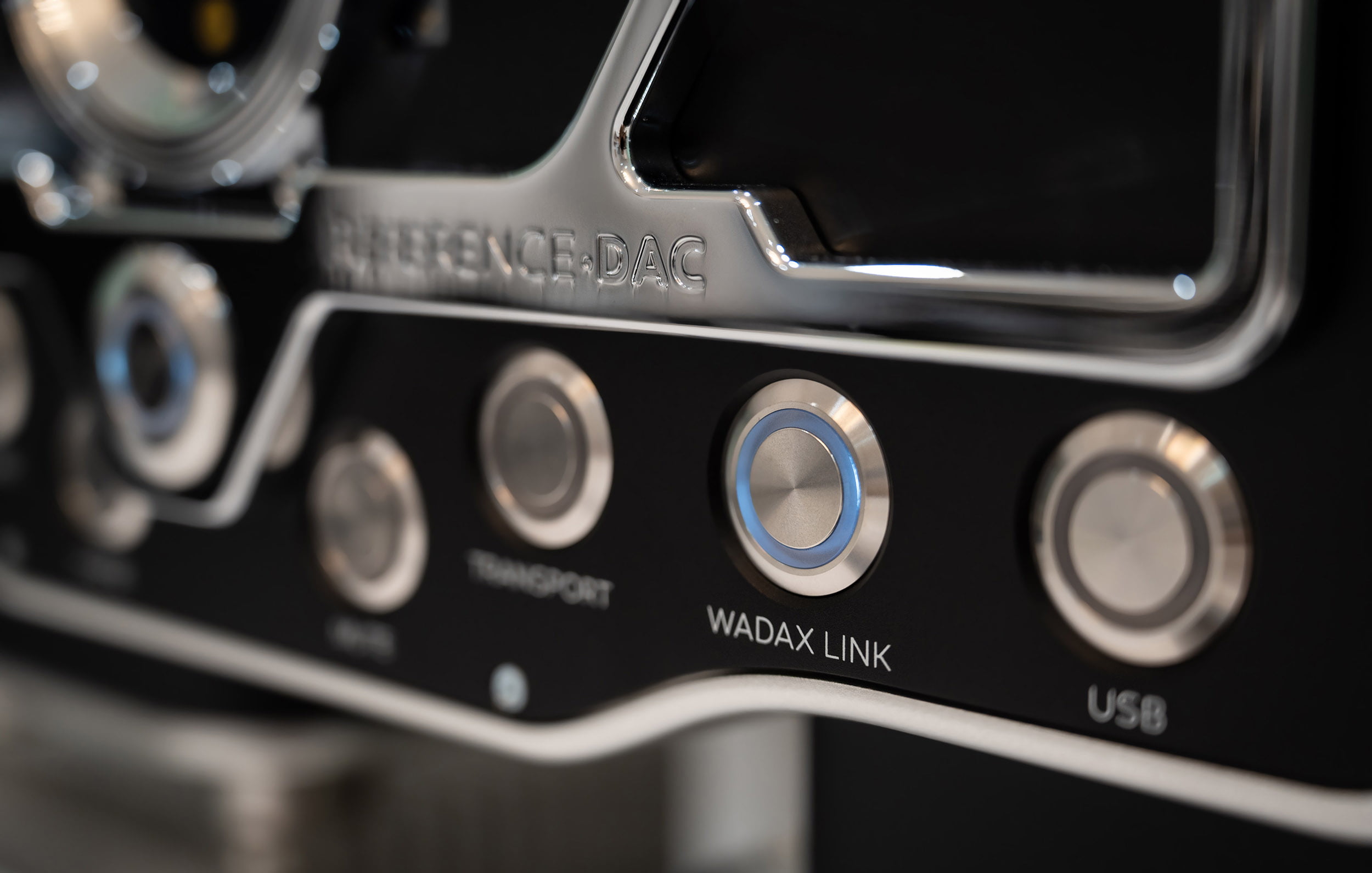
As the days and weeks ensued, I strived to build up and hone the system around the Wadax, to create a matching state of the art microscope with which to study this new beast. In doing so I learnt a lot. I threw various amplifiers, loudspeakers and cables at the setup and whilst every component I employed was nothing short of top class, I found that this source has an overwhelming amount of performance to give, so much so that most people (dealers included) will probably seriously underestimate it. At some junctures I had some very lofty equipment rigged up but I knew there was more, I knew these pieces were holding back the Wadax and so I substituted again and again, waited for home demo loans to come back and also had to borrow a few pieces here and there from manufacturers and distributors. The system ended up with the Thrax Libra 300B preamplifier, Tidal ferios monoblocks, the stunning new Rockport Orion floorstanders and high level Tara Labs and Hemingway cables, all components then which quite simply sit in the very top category as far as transparency and resolution is concerned. You can’t create a middle or bottom heavy system with the Reference. Everywhere else apart from the source will be the weak link and such is the level of information that the sonic differences between tiers of other equipment … say between a set of £20,000 and £40,000 speaker cables, will be simply enormous. At the very end when Christmas had been and gone I was still playing around with footers; the difference between a set of Stillpoints (less than 1% of the cost of the Wadax) under the Thrax Libra power amp was jaw dropping simply because of the intergalactic levels of performance being fed downstream.
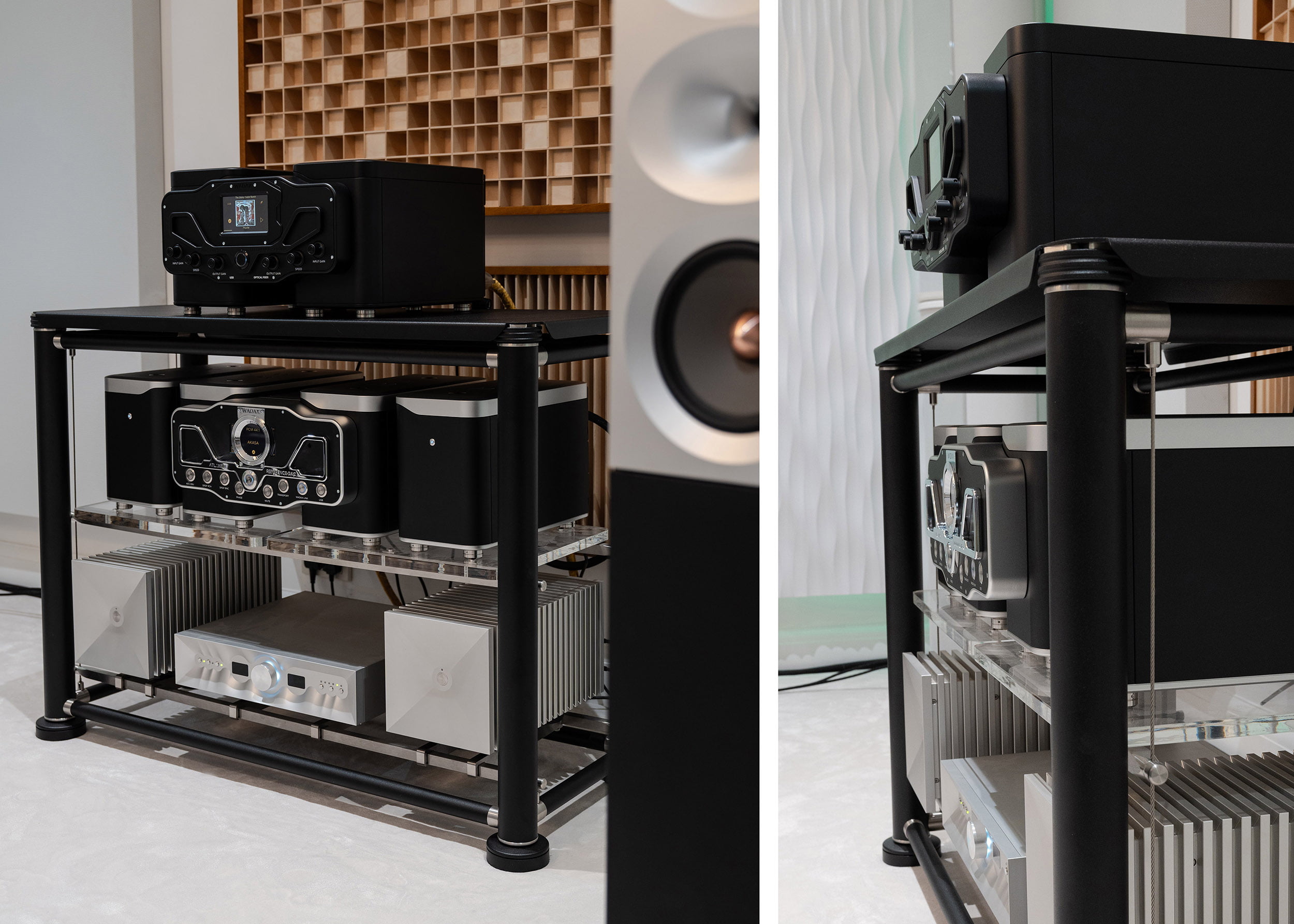
WHAT IS STANDOUT AND UNIQUE
As the months went on, what became the most salient aspects of the Wadax Reference sound, the most delectable and also the ones that were missed or missing the most when switching out to other digital setups ? This isn’t an easy thing to answer because the much higher level of realism that the Wadax imparts is obviously dependent on all aspects of the sound; any one thing lacking or incorrect can spoil the suspension of disbelief. Even just on basic resolution – and with red book as well as higher resolution files – there were details there on most of my favourite tracks that I’d simply never witnessed before. But if my hand were forced to pick out just a few facets for a headline, then the units sheer dynamic muscle and hence feeling of aliveness would definitely make the list, particularly in the bass region. The Atlantis Reference is the first digital setup that can sound truly as vivid, as hard hitting, and as ‘knock you off your feet’ energetic as the world’s best turntables mated to the very best phono preamps, whether that be in the units out and out ability to crescendo from 0mph to 200mph and beyond, or in the ever present “intra-dynamics” of individual notes, instruments, voices, drum hits; that moment when a solitary guitar twang from the back of the studio leaps through the listening room and seemingly vibrates and buzzes against your forehead ! Most of us know that the bass is the most difficult area of the sound whether you are designing a loudspeaker or a tonearm, and the Wadax most definitely shows you a new way with transparency and microdynamics in the lower registers. Everything in this region sounds quite different, and so much more real.
We are already getting to the point though where things have become quite complex to describe. The almost alarming dynamic ability of the Wadax is also physical and palpable in a way that just completely extricates it from the world of digital or even hifi. The startlingly real physical shapes that notes and instruments seem to inhabit are also inseparable from the 3d shape of the entire musical picture at large, which is simply enormous. The soundstaging and feeling of actual real space in and amongst proceedings is like nothing you have ever heard before. Indeed, when the Atlantis Reference was first exhibited in the UK by distributers Boyer Audio at the 2013 Ascot Hifi show, one of things most people buzzed about that weekend was the crazy one of a kind soundstaging with the modestly priced Kroma floorstanders. In this respect the Wadax is utterly unique.
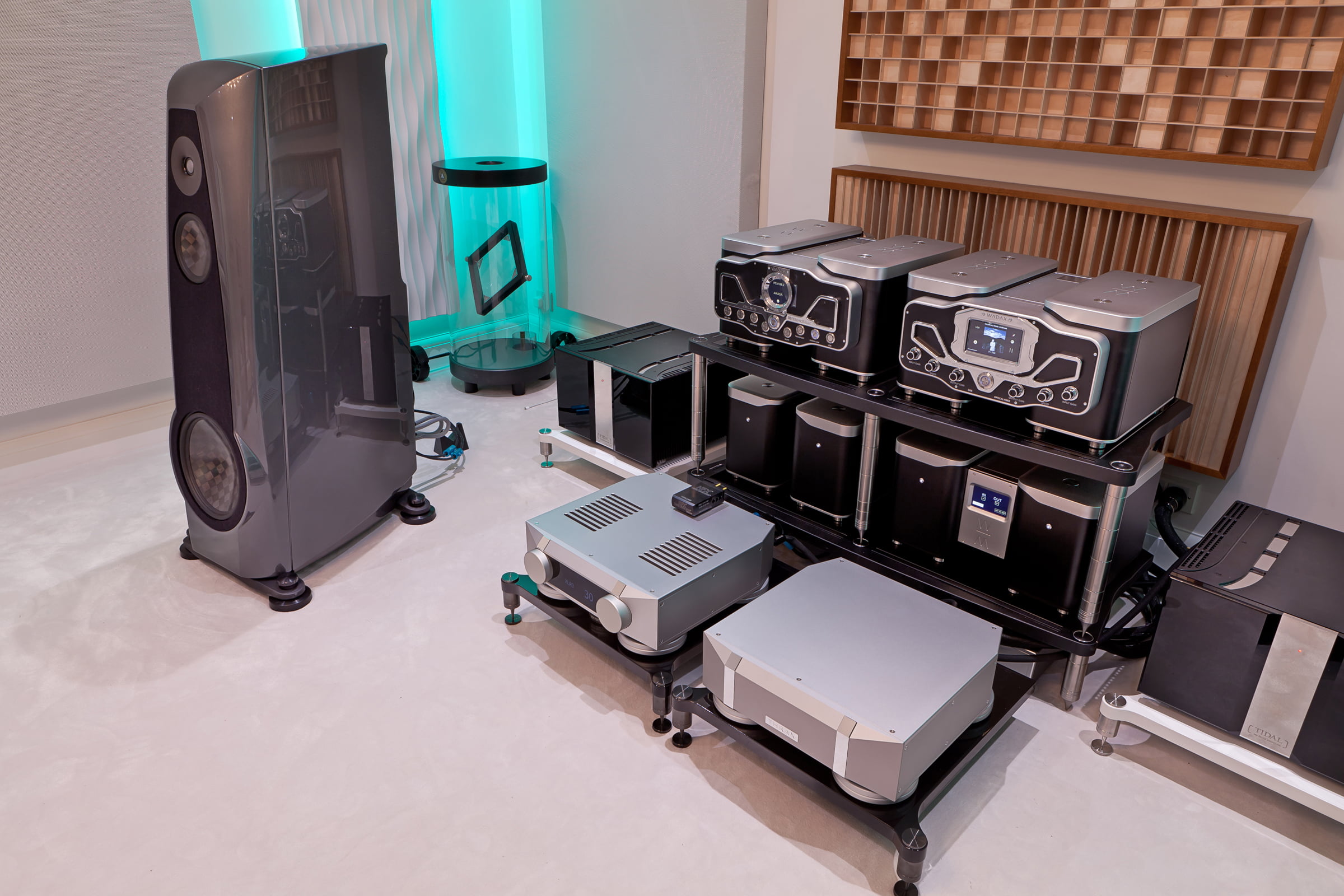
The last attribute I would single out is harmonics and tonal colour and I will pontificate on this a little because its an important point and maybe actually the thing that hits you in the face first. The Tidal Contros is for me a class leader here, giving a sound that has always seemed paradoxically both utterly neutral, invisible and uncoloured, yet seemingly richer, more tonally saturated and sumptuous that many very expensive tube DACs which also inevitably have a nagging sense of colour and manipulation about them. I learnt some time ago that Tidal digital achieves this potent rendition of texture and harmonic structure not by employing tubes or expanding any part of the sound, but literally just by being as close to perfectly neutral and invisible as possible. All their equipment does this; the prisma preamp is no different and the real easter egg is the 11kg Class D Intra power amplifier, more tonally glowing that your set of exotic 300B mono blocks running to many dozens of thousands of pounds for the pair. Yes, it really is Class D. Guess what, when the noise is that low, when the equipment is that transparent, the liquidity, the concentrate cocktail of texture and tonal shading is all revealed. It is all there on the CD, the wav file or indeed, the internet streaming server attached to your modest home network. It has been there all along but it is only now that we can fully unlock and realise it. You don’t need valves, you don’t need an augmented midrange, you don’t need added warmth, you just need to reveal it as skilfully and as truthfully as possible.
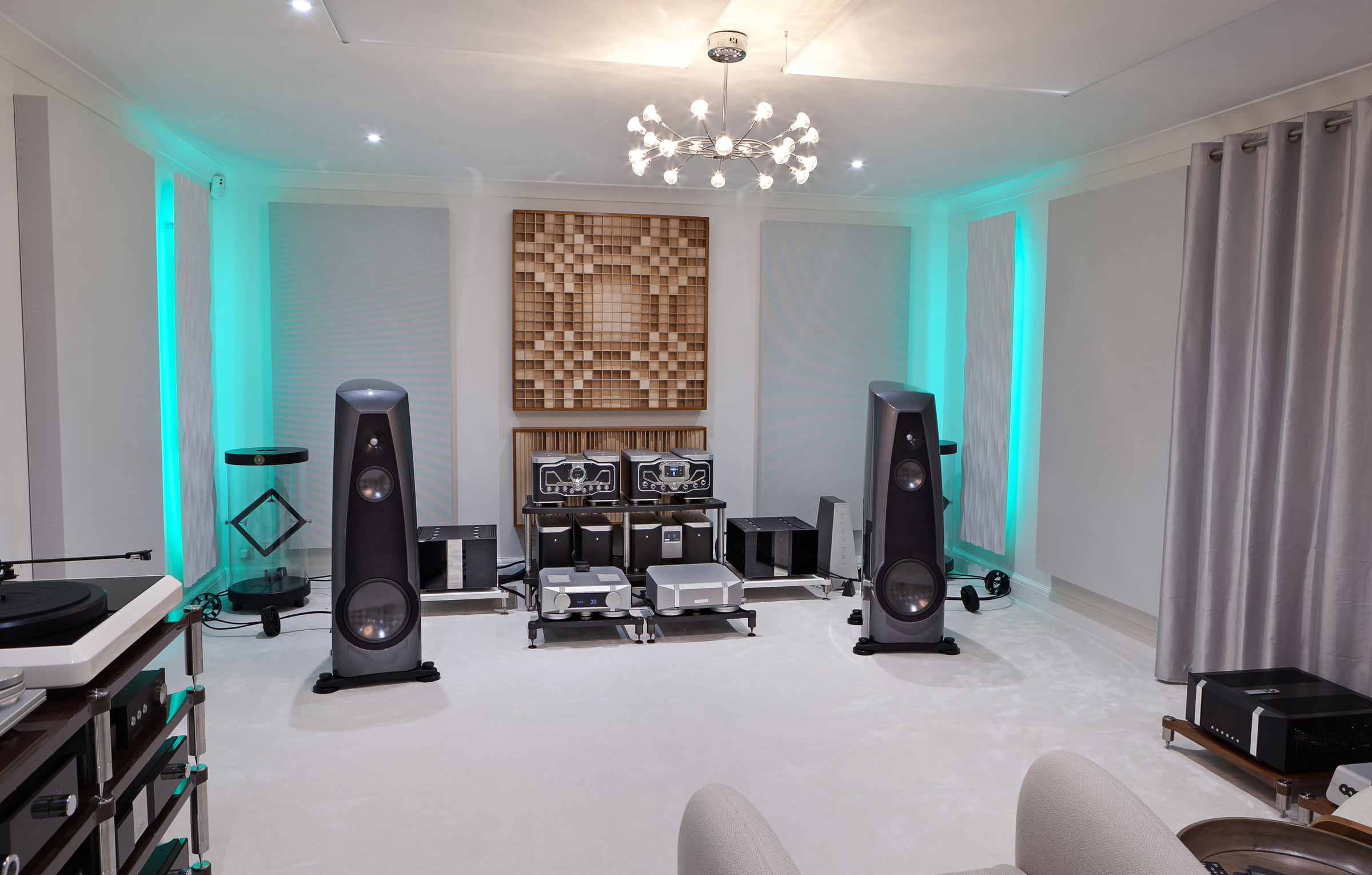
This then is exactly what the Wadax does too except it goes far beyond anything else in this respect, the feeling of ripening, of notes having been stripped bare, fully free from any haze, fog or god forbid, digital hardening. If every other DAC was an inviting colourful bowl of fruit, the kitchen spotlights shining in the polished apple skin, the bananas perfect yellow for digesting with not a hint of blackening to be seen; then the Wadax is that same bowl but every single piece of fruit has had the skin peeled off. Raw unfettered flesh, abundant moisture and the piercing hues of real fructose, the juice of the nectarine glinting all over its fibrous surface, the perfectly fashioned tangerine segments bursting at the corners with sunshine fluid, the sweet aroma of Colombian banana percolating into the air. Unshackled, fully exposed, sonic nakedness of the kind you have never heard before.
The footnote to all of that though, is that all of these elements are completely real. There is no fakery, nothing added in, no extra excitement, no added lustre or projected midband, no sharpened edges or smoothed out shapes and not a drop of digital glare in the upper registers. As Harley correctly reported in the Absolute Sound, the Wadax Reference does this thing with this singular extension in the upper frequencies, a kind of sharpness and limitless apportioning of frequencies but with no distortion, brightness or glare. It does this without smoothing, rounding, filtering or rolling off and it means that system can play very very loud yet at the same time, certain instruments sound strident and piercing, just as they would in real life, yet without any discomfort on the part of you the listener.
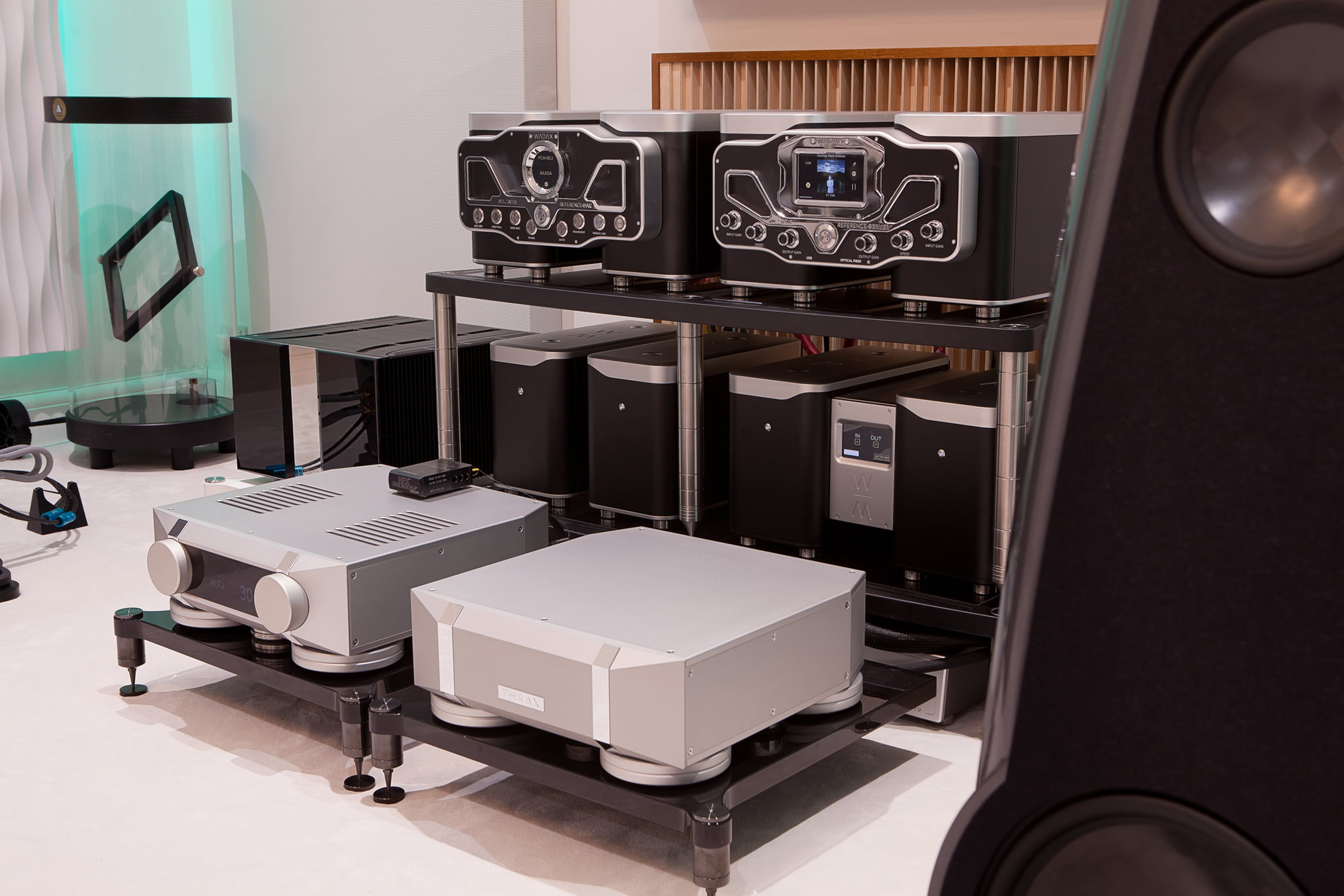
A customer of mine recently alerted me to some internet forum comments casually suggesting that the Wadax Reference at a certain hifi show sounded a little “second order harmonic”. Now this is a very telling comment. In one way it symbolises how many of us have all somehow gotten used to the trace artefacts in digital and accepted it’s obvious limitations when compared to vinyl; we expect it to be limited in harmonic ability and if it’s rich and saturated then it must be second order harmonic with some vacuum tubes or lower end bloom engineered in. In addition, it’s a statement about the status quo of many of today’s super expensive digital front ends in that that they often prioritise things like leading edge and the feeling of resolution. That is they are to a certain degree, tonally bereft.
No, when you hear the Wadax in a controlled or known system, you know immediately that its hand is utterly neutral and not a gram is being added or embellished yet you hear tonality, timbre, texture in a way you simply haven’t experienced before. It isn’t second order harmonic, it is just way closer to the ultimate truth. And moreover, it is this feature which is one of the biggest lessons the Wadax gives you in changing your view of the ultimate potential of digital music. It is possibly this feature which you miss the most when you have to say goodbye and it also intrinsic to the Wadax sound and crucially, not lost on the new super affordable Wadax Studio Player either.
In summary then, the Reference really has no sound. As Roy Gregory astutely pointed out, it is plagued with neither the unavoidable nasties of digital or the more favourable and intrinsic colourations of vinyl playback, and is probably closer to tape as an experience than anything else. To me, it is the most invisible, real sounding, pure ‘open gate’ replay of the digital medium that I have ever witnessed. And if you care to deep dive into the Reference’s unique technology, and in particluar Wadax’s incredibly complex “musIC” feed forward error correction process, you may start to understand why this is so. I won’t do it justice here though so please head over to some of the links below when you have more time.
“The Reference DAC seemed to strip away the ever-present patina of hardness, glare, and edge that give digitally reproduced music an artificiality that never really fools the brain into thinking it’s thereal thing. We’ve all lived with these limitations of digital—textures are thinned, tone colors bleached, and instrumen-tal timbre is overlaid with a whitish haze. Although thes eartifacts have been greatly reduced in recent years, even the best DACs have not completely banished this character”
SCALABILITY, LEVEL 1 TO 4
The DAC with its dual power supplies was the first Reference unit to be released by Wadax in 2020. Even as a standalone, reviewed back then with the now discontinued former Atlantis server using regular USB, it marked itself out as something extraordinary, doing things that no other DAC had so far managed to get close to. Today, that DAC costs a cool £160,000 but there are already a number of market competitors nibbling scarily close to that sort of pricing.
The Reference server followed a couple of years later and it built on the sound by such a powerful degree that the Absolute Sound pronounced it as even more impressive and important product than the DAC. Today at £65,000 it is only a small amount more than the Taiko Extreme server bundled with switch,router and power upgrades. It is also less costly than Taiko’s new product the Olympus. Note also that you can’t feed the Wadax with a switch or other fancy network add-ons. When I tried using the £5000 Melco S10 dataswitch with it, it sounded worse. The Wadax is too clever for that stuff, it does not need additional network components.
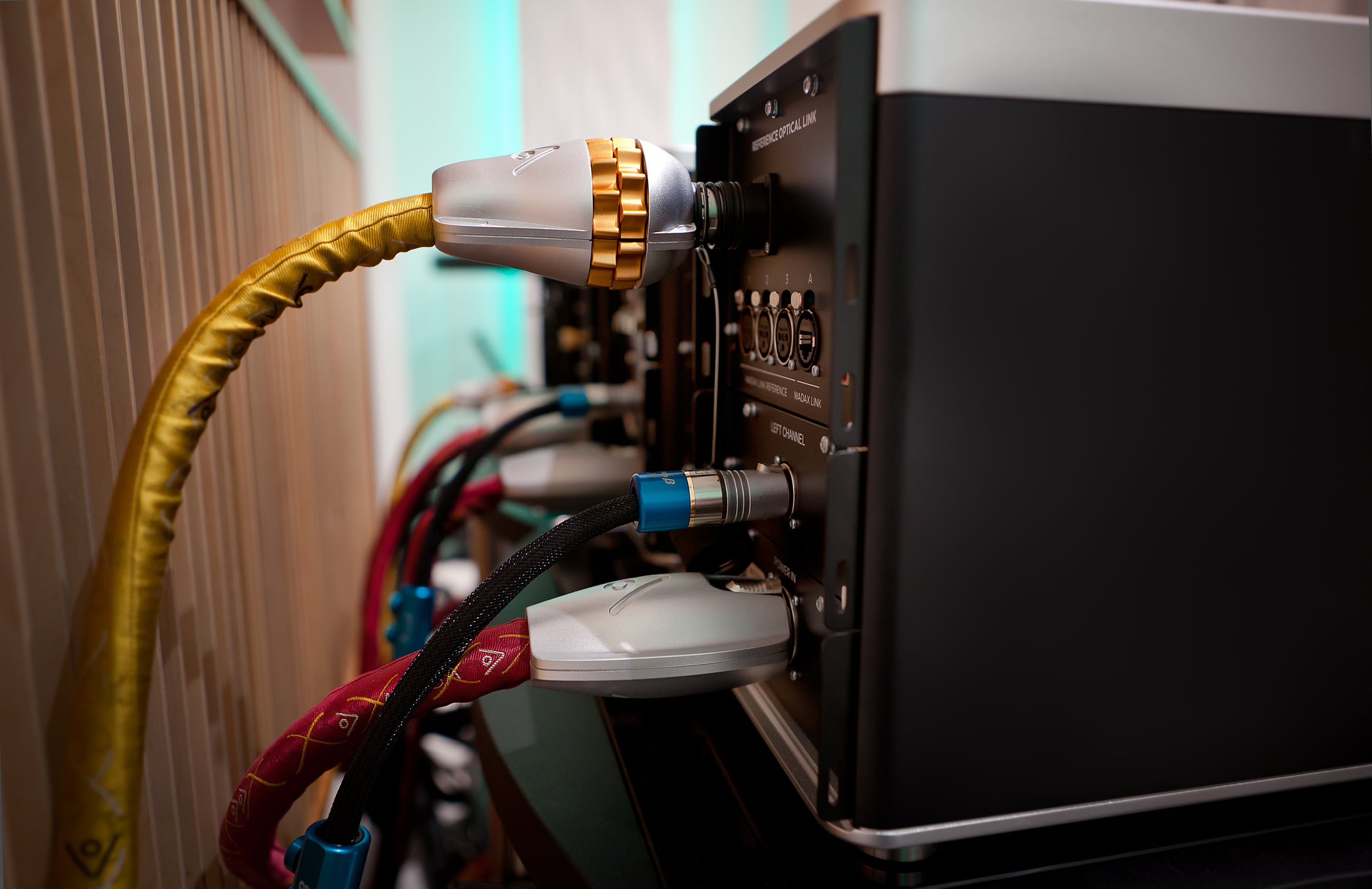
If you want the very best level though, then there are at the moment 3 other options to add. Firstly the most important, the £19,500 Akasa glass optical interface between Server and DAC. Against my best USB the £5300 Tara Labs Grand Master EVO (we have yet to hear of a USB cable which matches or beats the £3000 Tara Master USB let alone the EVO) the glass optical was quite shocking as an upgrade. It actually made every track sound completely different. It added so much in the way of 3d, depth, space, ripening and overall realism. It was truly a lesson in the limitations and remarkable influence of the digital connection. I did this quick demo to many customers last winter and they were all staggered at the difference. The Akasa optical connection would be a no brainer if you had already purchased the main units and I would bet that that same £19,500 spent anywhere else in the host system wouldn’t even get close to providing the same sort of improvement.
After that, the pair of DC umbilical cables which connect the DAC power supplies up can also be upgraded to Reference spec. I found that these add a very useful degree of performance, less than the glass optical so not as persuasive for the outlay but still providing notable increases in microdynamics, delicacy and focus.
The final and most recent level 4 upgrade is the new Reference Server power supply. On it’s own it added much. If the system was already employing a Shunyata Everest conditioner then its effect was less but I felt that it was still an important building block in the flagship setup, adding depth, stability and bags of extra authority. It is also comforting proof that Wadax have technology and upgrades waiting In the wings. The Reference will never be a closed product but one that constantly advances and remains a unassailable aspirational beacon for the entire industry.
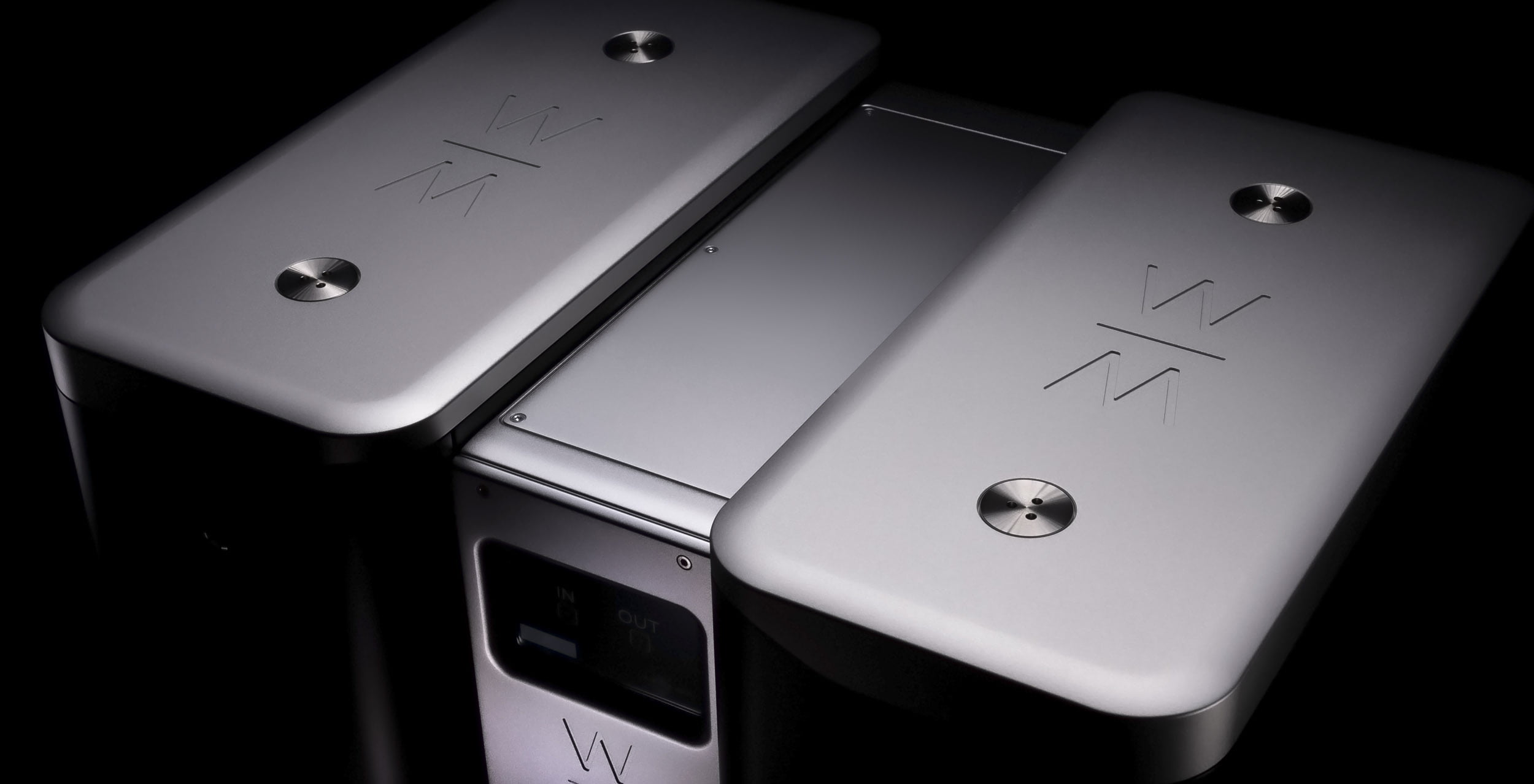
This last point is an important one too and something one would hope for at this sort of price level. Central to the Atlantis Reference form factor is the committed pledge from the factory that it is essentially a never-ending technology, much like a developing Formula 1 car. Each Wadax reference sold is a gilt edge purchase for life which will be continually monitored, supported and upgraded throughout its lifetime by the factory. With the addition of the server power supply, Akasa power cables and Glass optical digital transmission system, the current flagship specification is now at “level 4” but Wadax reputedly already have further level advances waiting in the wings, ready to be unleashed should the competition ever make any significant headway.
The only part we have missed of course is the one I have so far not examined closely nor purchased and that is the Reference Transport. I hope to change that very soon though, for those of us who wish to play discs, it reportedly edges both streaming and file playing using the server.
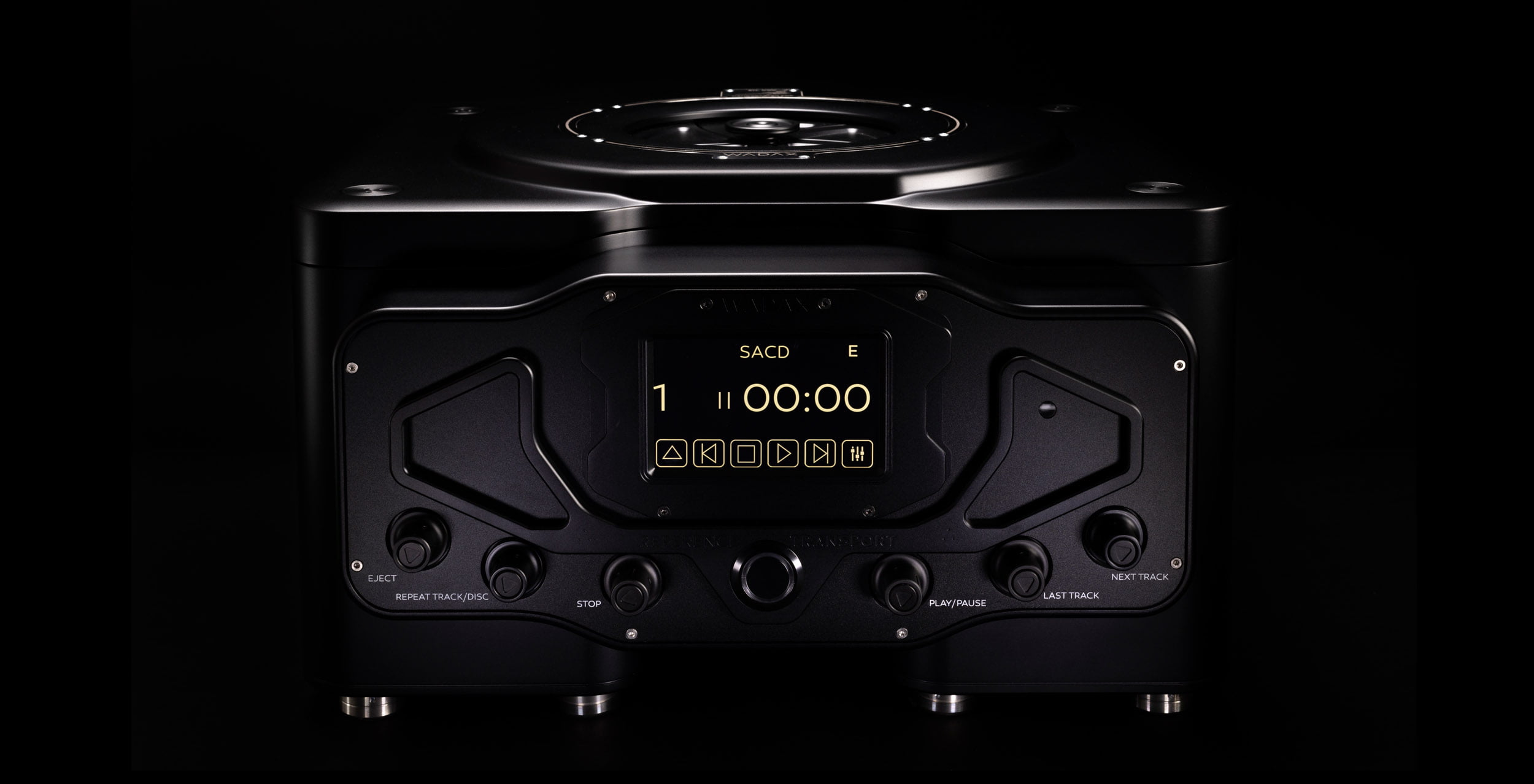
CHANGING THE SOUND
Both the Reference Dac and the Server have some very powerful controls which contour the sound to user and system preference. These are no small things. They are extremely powerful and I consider them to render the Reference an even greater product than it already is.
Starting with the DAC, you can tune both the output voltage and impedance and these are always both visible from 2 displays on the front panel. The voltage has just 3 settings at 1v, 2v and 4v. As you might expect this generally changes how forthright the sound is, how much impact and overall energy balance is present. At the higher 4v you have a seemingly stronger and more intense delivery of sound which may suit systems with a gentle, laid back or softer overall rendition. Moving down to 2v and 1v you reduce the sense of percussiveness whilst allowing more delicacy and nuance to shine through. I used 2v exclusively for all my listening but I can well imagine other setups using one of the settings either side.
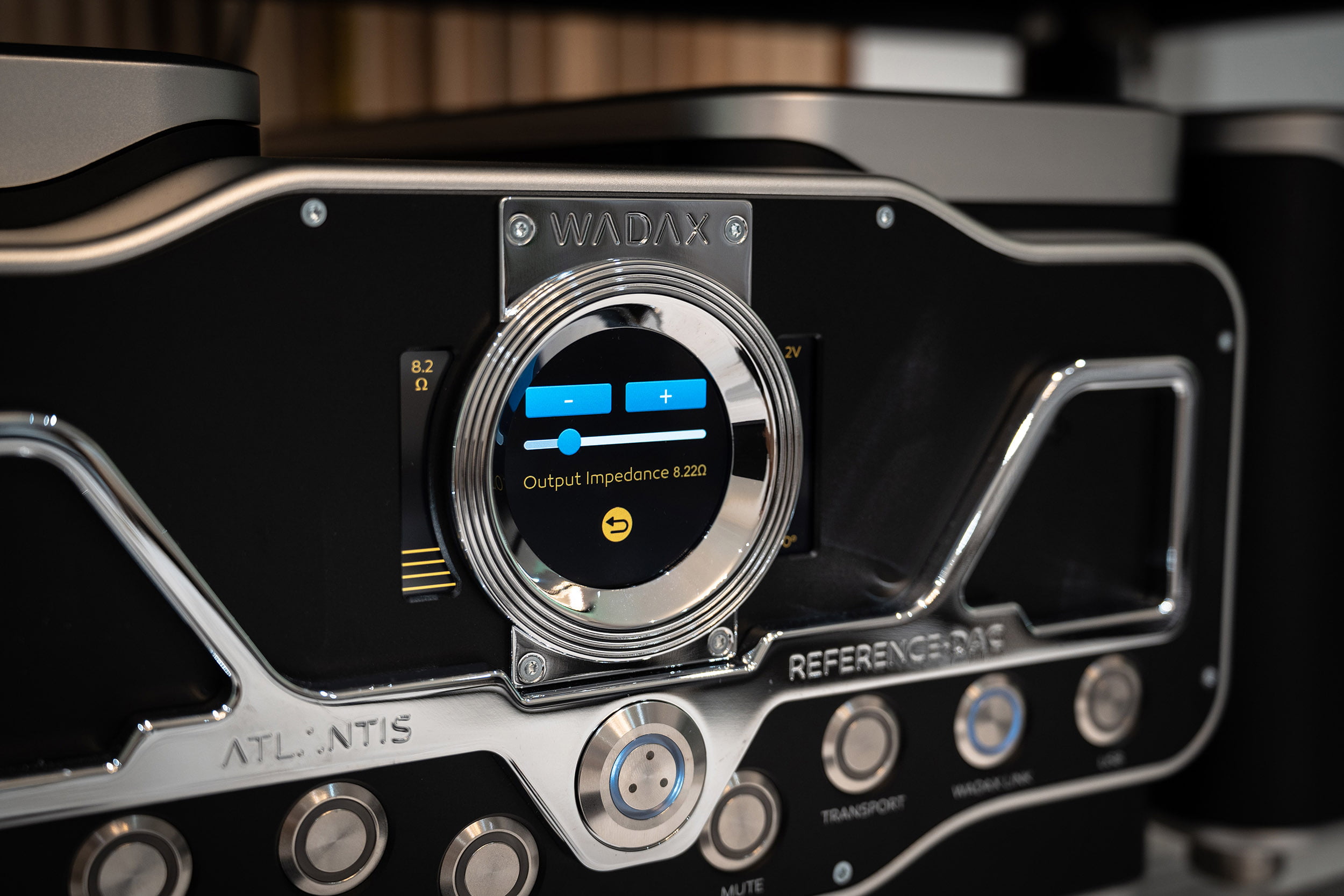
The DAC’s output Impedance is even more useful though. Here you have 16 different settings ranging from 0 ohms to 600 ohms, and with half of these residing in a fine 7-10 ohms range. This isn’t something you adjust by looking up the specs of your preamplifier. No, the Impedance is best adjusted by ear to suit your listening tastes and system. Setting it at zero is perhaps a good starting point where the music has the most slam, staccato, pace and rhythmical shape. As you increase the impedance you introduce more and more smoothness and liquidity to edges and the flow of the music. This in practice is immensely powerful. At one point in my investigations I changed from Shunyata mains cables to Tara Labs mains cables and whilst I liked both results, altering the Impedance by a few steps helped me counterbalance and optimise the relative smoothness and spikyness that those two sets of mains cables offer, giving an appreciable better result overall on both counts.
The server settings are something called DWC, digital waveform control. DWC was developed to correct anomalies in the digital signal which occur naturally as it moves across traces and wires. A digital signal starts as a perfect square wave but does not end up as one and DWC is designed to correct the waveform while maintaining a bit-perfect signal. The first adjustable parameter is speed, it affects the rise time of the square wave. It provides more punctuation in attack, more focus and also a sense of transparency and vitality to the sound as it is increased. The next parameter is input gain which affects the plateau of the waveform. Input gain changes the presence and to a lesser extent, texture of the sound. Output gain controls the back propagation from the DAC to the server as it is an asynchronous design. Adjusting the output gain changes the body and weight of the sound. I found that the 3 settings work a little like VTA on a tonearm. You add notches to each in an attempt to find a position where everything sounds optimised and “right” in terms of the rhythm, speed, life, density and saturation of the music. When you go to far the feeling of something perfect and right will start to collapse and it is then that you back off a grade or two. When there is not enough of each parameter, you get a similar effect in that the sound will just be flatter and not as interesting as it was before.
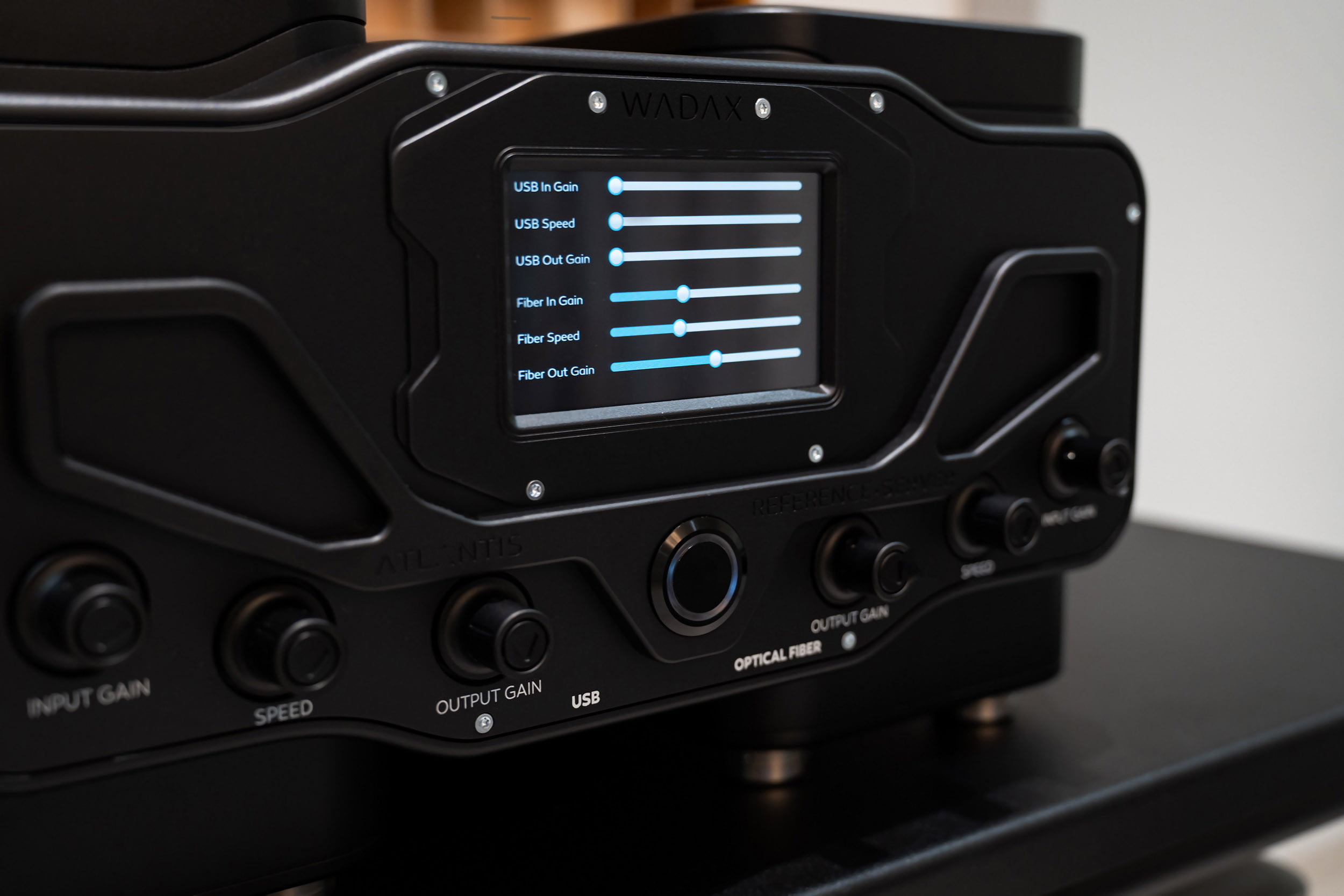
The main communication I wanted to impart here is that whilst many people shy away from filter options and extra sonic controls on digital equipment, once you become accustomed to these settings you realise just how important and powerful they are. They are another important element which makes the Wadax Reference so unique and separate from any other digital out there. This is a source which can be perfectly integrated into one’s system and one’s ears and musical tastes. The performance difference between having everything set to default and then everything sympathetically adjusted is not small.
SUMMIMG UP
That just about concludes my first writing on the Reference. Well done for making it this far !
Bold, unapologetic and utterly unique in the way it sounds, the way it looks and its inherent technology. For me it is one of the few components I have ever experienced which genuinely advances us to a whole new place. I love it for all these things but best of all, once I am sat down and listening and immersed in it all, I simply forget all of the above, everything bar the incredible music energising the room.
Obviously as a dealer I pay a demo rate but its still a huge chunk of money and remember I have to fund around 9 other demo Dacs as well from other manufacturers, not to mention every thing else I own as a business. But it persuaded me pretty damn quickly and I had little hesitation in putting my hand in my own pocket. It is a device that I never wish to be without and I probably can’t give it a more personal and authentic recommendation than that.
Signing off for now but the Wadax story really has only just begun because next door in the Lotus demo room as a write is the first UK demo unit of the exciting new £37,500 one box CD/SACD/Streamer unit with volume control and built around the very same Dac board as the reference. The Studio Player at a far far lower price will be of huge interest to a much wider audience; the same Wadax sound but in a single versatile chassis and with future expansion capability too. This unit sonically punches far far above its asking price and we have already presold a few and have several home demos booked in for the late summer and Autumn. There is plenty more in store from Madrid too in the near future, this is definitely the start of a “now” moment for a very exciting brand.
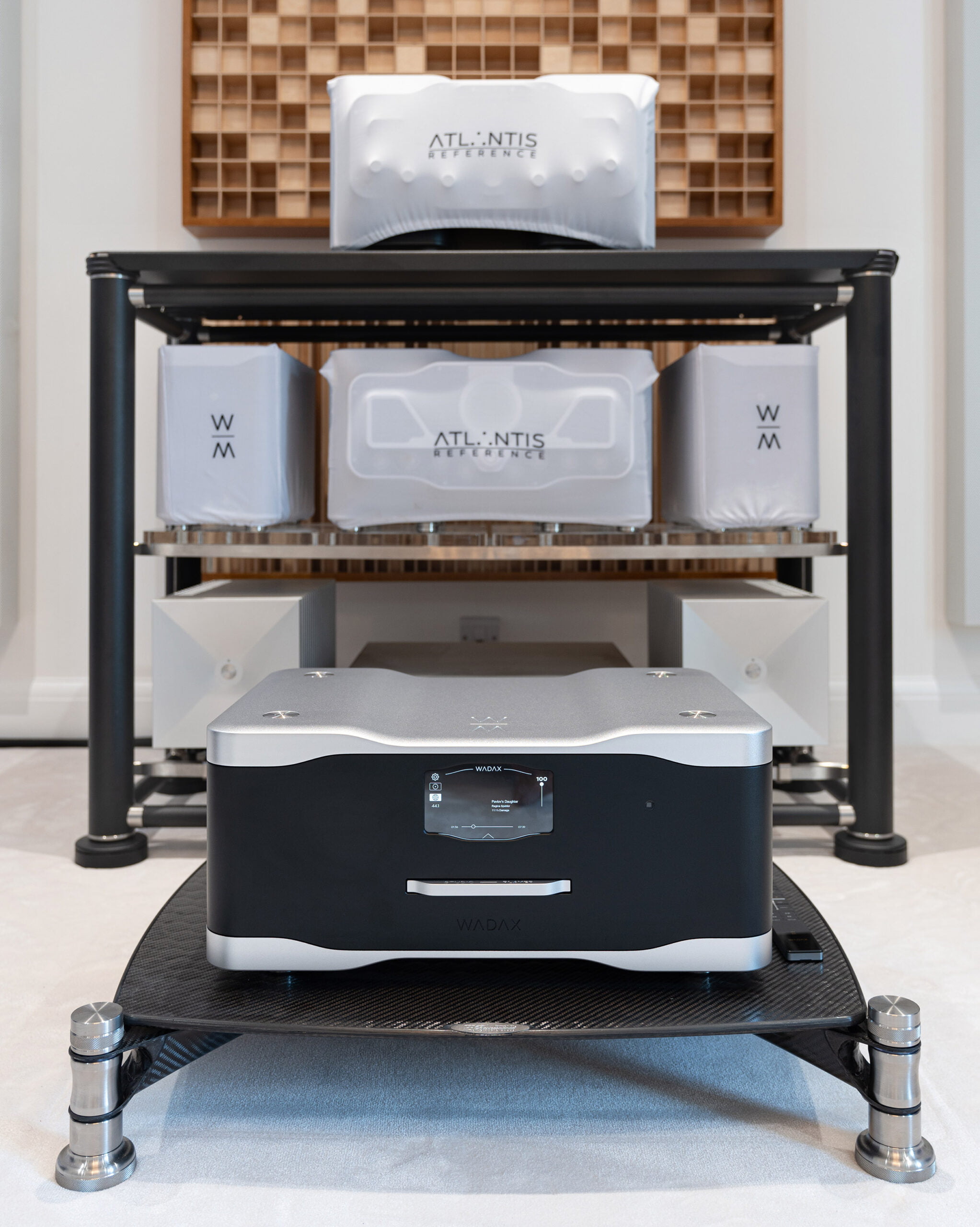
“The music produced by the Wadax Reference components has a quality that is more akin to the clarity and communication of live music than anything else I’ve heard. It’s not indistinguishable from the live event, but it captures much of the emotional and expressive range that makes the best analog systems so engaging, but combined with a presentation that is unquestionably more accurate and ultimately, potentially more convincing. If the goal of high-end audio is to re-create a facsimile of the original performance, then the Wadax Reference DAC has advanced the state of that art significantly … noting else that I’ve heard is even in the same race.”
The post THE WADAX ATLANTIS REFERENCE first appeared on lotushifi.